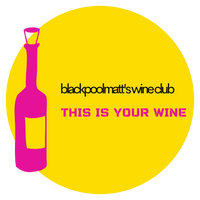sparkling wine — never been better!
I’ve been travelling quite a bit recently, taking in England, Germany, Australia, and the Pacific North-West. As I tasted my way through these different regions, I realised just how much good sparkling wine I had been enjoying, and that many of these wines weren’t simply carbon copies of champagne but entirely their own thing.
I was reflecting on all this as I drove to Syncline, a producer in Columbia Gorge, Washington. I had no idea they even made sparkling wine (I was there for their superb Gamay), but as I was enjoying the 2014 Blanc de Noirs owner and winemaker James Mantone said exactly what I was thinking: “there’s never been a better time to be a sparkling wine drinker.”
There are so many different expressions of sparkling wine made around the world which are not just alternatives to champagne but often very different: Champagne itself, the rest of France, Germany, Italy, Spain, England, Australia, South Africa, the US, and elsewhere. Here are a few of those many regions which have been featured in blackpoolmatt’s wine club.
champagne

All bubbles begin in Champagne. In the States, we’re lucky to have access to the big houses (Billecart-Salmon, Bollinger, Charles Heidsieck are among my favourites) and to the smaller grower-producers who have been featured in both blackpoolmatt’s wine club and my sparkling wine club with partner Ch. Sonoma. Grower-producers are based in small villages, have small holdings, and often focus on a style/grape variety, for example Moussé et Fils and Meunier. Already within two years, we’ve featured such varied, quality producers such as J. Lassalle, Lelarge-Pugeot, Gaston-Chiquet, Marc Hebrart, René Geoffrey, and Stèphane Coquilette. There are always new producers to discover in Champagne and we’re here to help you find them.
crémant
Crémant used to be a by-word for leftover wine from producers more concerned with still wine but Crémant has overall improved greatly in the last few years. Loire and Alsace are the two most consistent regions: a recent favourite is Meyer-Fonné’s “Brut Extra,” a dry, light alternative to champagne.
There’s also another very traditional region which gets overlooked: Die in southern France. In contrast to champagne, the historic wines are made using the ancestral method and are often sweet and aromatic. Alternatively, Achard-Vincent's Clairette de Die Brut is a dry, classic, and very friendly (in style and price) wine.

cava
I’ve been taking an online Cava course for WSET Certified Educators, to learn more about Spain’s sparkling wine. Cava is much more diverse and interesting than its supermarket reputation suggests, confirming just how exciting the sparkling wine sector is: the Mediterranean climate produces a range of styles and levels of quality. Check out my podcast interview with three historic Cava producers to see how the wines are progressing with a more focused emphasis on regional identity.
germany and austria

Germans drink more sparkling wine than any other country. A lot of it is very basic, but there’s an historic relationship between Germany and Champagne (think of the names of producers like Krug, Roederer, or Deutz). The best producers in Germany are making fantastic traditional method wines quite different from champagne as the grape variety is Riesling, which is much more aromatic than, for example, Chardonnay. This gives the wines a varietal character which could only be German, although the Austrians make some pretty good sparkling wine too: Madl's Sekt is from Welschriesling, Grüner Veltliner, and Riesling, and is aged on the lees for 5 years for a style that's mature, fresh, and aromatic—and delicious.
england
England is often discussed in similar terms to Champagne: similar soils, climate, and grape varieties. But it’s even cooler and more influenced by the English Channel for high acid, lean wines balanced by a small amount of sugar. Digby and Hush Heath are two great introductions to English bubbles.
oregon

I’ve just been to Oregon, where I tasted the line-up of six wines from Corollary, a relatively new producer who have also been featured in blackpoolmatt’s wine club.
I first visited Willamette Valley ten years ago and couldn’t understand why more sparkling wine wasn’t being made. But that’s changing. As the Corollary wines demonstrate, Pinot Noir, Chardonnay, and, more surprisingly, Pinot Blanc are ideal for sparkling wine production and crisp, elegant wines capable of ageing.
prosecco
It’s easy to dismiss Prosecco as a simple, easy-drinking wine but there are maverick producers challenging that assumption. Some Prosecco producers also make a dry version of the ancestral method which is often referred to as Col Fondo but is officially labelled Sui Lieviti. These are funky, cloudy wines which are a lot of fun even if they don’t fit consumer perceptions of Prosecco. At the same time, they offer an alternative to the mass amounts of generic Prosecco on the market.
And, of course, Italy is not just Prosecco. The best known traditional method sparkling wine is Franciacorta but there are others across the country too. Edi Kante is based in Friuli on the Slovenian border: his sparkling wine is a blend of Chardonnay and a local variety, Malvasia Istria—making it familiar to champagne consumers but with a distinct regional identity.

These wines are just the tip of the iceberg for sparkling wine which is made all over the world. Some are so good they rarely leave the region where they’re made; others manage to escape and be brought to your table by blackpoolmatt’s wine club.
